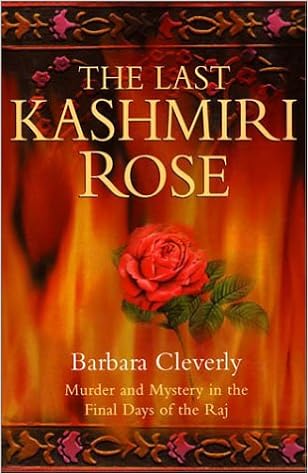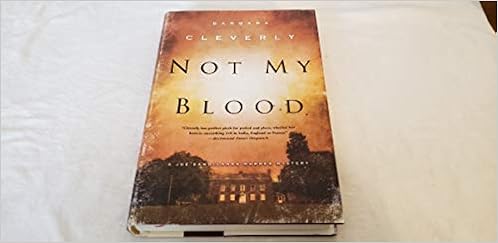
The Last Kashmiri Rose: Murder and Mystery in the Final Days of the Raj (Joe Sandilands Murder Mysteries)
Hardcover – July 18, 2002
Description
From Publishers Weekly In an impressive debut, British author Cleverly weaves an engrossing tale of serial murder and the impending decline of the British Empire into a well-written fair-play mystery set in 1920s India. Commander Joe Sandilands, a Scotland Yarder completing a stint with the Bengal Police, is on his way back home when the provincial governor asks him to look into the recent death-by-suicide of an army officers young wife. Nancy Drummond, a close friend of the dead woman, reveals that four other officers wives have also died¢apparently by accident or misadventure¢over a period of 12 years, all in the month of March. Sandilandss investigation reveals further disturbing similarities; the cause of death in each case was the victims greatest phobia, and an unknown person has marked the anniversaries of their passing by placing a Kashmiri rose on their graves. With Drummond as his assistant and love interest, the detective probes beneath the surface of a society attempting to replicate pre-WWI England in a very different milieu. The political tensions of the time are more than mere background dressing, while the clash of cultures is instrumental to the plot. The likable and plausible Sandilands and other characters, both British and Indian, come across as living, breathing people. The killers motivation proves to be more baffling than his identity, but the solution is satisfying, as is Sandilandss handling of the ethical issues that his uncovering of the truth has raised. Classic whodunit fans should look forward to Cleverlys future efforts.Copyright 2002 Reed Business Information, Inc. From Library Journal In the 1920s, a serial killer targets the wives of Britons attached to the military Bengal Greys near Calcutta. Disguised as accidents, the murders go undetected until the latest, the purported suicide of a young wife, finally attracts the attention of investigator Joseph Sandilands. Recognizing common threads in all five deaths, he dives into a thorough investigation that revisits all the crime scenes. A strongly evocative narrative, sensitive characterizations, artful dialog, and masterly plotting make for an excellent first historical, which won the Crime Writer Association's Debut Dagger competition. Copyright 2002 Reed Business Information, Inc. From Booklist The year is 1922, and the end of British rule in India is approaching. But in the British garrison at Panikhat, near Bengal, the pervading unease is caused less by the tense political situation than by the unexplained deaths of five women, all wives of British officers serving in the Bengal Greys regiment. The governor of Bengal calls in Scotland Yard detective Joe Sandilands to investigate, indicating that although the women's deaths appear accidental, he suspects murder. Joe has his job cut out for him, what with stone-cold evidence, compromised crime scenes, and uncooperative or missing witnesses. What's more, his Scotland Yard training in modern forensics and investigative techniques has little relevance in Panikhat. But with the help of a young Indian police sergeant and the Governor's niece, Nancy, Joe eventually uncovers a chilling story of revenge, hatred, and murder. Cleverly's debut novel, deftly plotted and filled with unexpected twists, effectively captures the sights and sounds of 1920s India and provides a fascinating look at the social and political climate of the time. Emily Melton Copyright © American Library Association. All rights reserved Read more
Features & Highlights
- Conjuring up the last golden days of the Raj and the turbulent early ones of Indian rule, this suspenseful and atmospheric first novel—the winner of the Crime Writer Association’s Debut Dagger competition—draws the governor of Bengal, local police authorities, and visiting Scotland Yard detective Joe Sandilands into an increasingly baffling and bizarre case of serial murder. It is 1922, in Panikhat. In March of each of the past five years the wife of an officer in the Bengal Greys has met with a violent and terrifying death. One died in a fire, another by a cobra bite, the third from a fall, and the fourth victim drowned. Of course, they all might have been accidents, while the death of Captain Somersham’s pretty young wife, who was found with her wrists cut, could be ruled a suicide. One link between the five cases, however, points to foul, disturbing play. On the anniversary of the deaths small red roses mysteriously appear on the women’s graves. With only a few days to go before the end of March and with faith in the new Western science of psychological profiling, Joe Sandilands finds himself running a race against time and a serial killer who alone knows the recipient of the next Kashmiri rose. “The atmosphere of the dying days of the Raj is colorfully captured.”—Sunday Telegraph “Introduces an intelligent author and an interesting investigator.”—Morning Star





